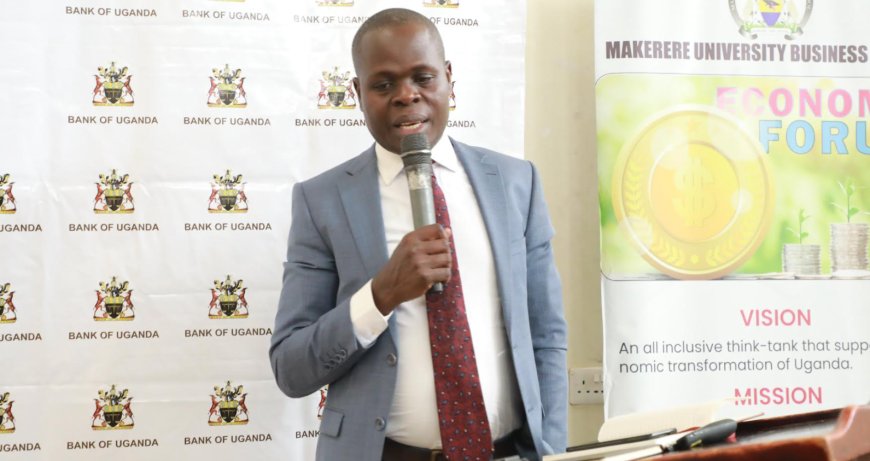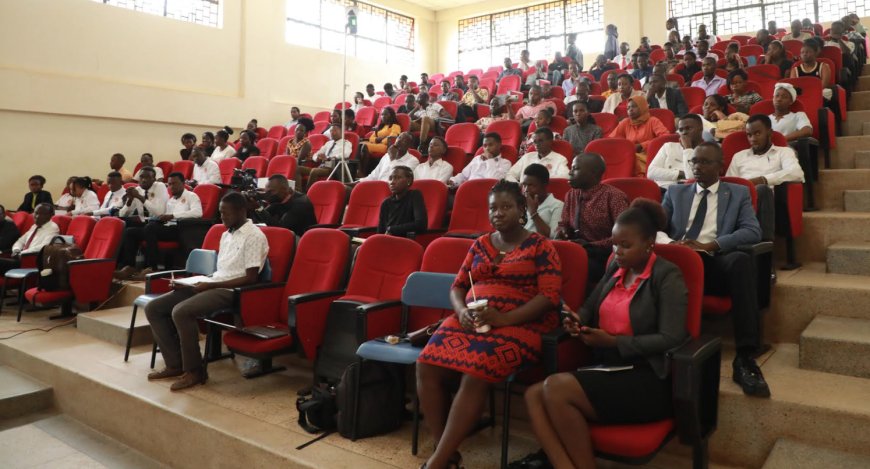We have what it takes to control inflation - Bank of Uganda
KAMPALA - Jonah Waiswa, Head of Public Education, Bank of Uganda says that everything they do is for the benefit of this economy. The central Bank takes actions and decisions that are aimed at improving the economy of this country. He made the remarks as a key note speaker while addressing university students of MUBS and Kyambogo during the MUBS Economic Seminar and discussed the topic: “Understanding the role of Bank of Uganda in the economy.” “The main aspect is to support economic growth through printing currency notes and coins to enable the business community go through their business transactions easily. In case you have do not have change, your money has been burnt, eaten by rats or is old, Bank of Uganda avails you with the change needed and replaces old, burnt or eaten notes,” Mr. Waiswa revealed.
He added that they regulate banks and financial institutions which are in 3 categories; commercial banks, credit and micro finance institutions which are there to facilitate trade.
However, Mr. Waiswa warned the public to be vigilant of while transacting online because they can easily lose their money. Mr. Waiswa also used the opportunity to clarify that the cause of the steadily increasing inflation was not absence of the Governor of Bank of Uganda, but high demand for commodities in the post COVID-19 period, Russia Vs Ukraine War and the drought which led to disruptions in the chain supply of commodities.
“Those three factors did not leave us the same, and the problem of inflation cuts across the whole world, including countries where they have Central Bank Governors,” he said.
Policy actions by a monetary authority regulate the cost of money to control inflation. Uganda has used an inflation-targeting-lite monetary policy framework since 2011. The target is 5% inflation through Central Bank Rate (CBR) which is defined as a rate set independently by Bank of Uganda, depending on its forecast of future inflation and other economic variables, like estimate of growth of real economic activity, to influence lending behavior of commercial banks so as to foster price stability and a sound financial system.
Mr Jonah Waiswa. Uganda has employed two Monetary Policy Frameworks since 1993 which include;
a) Reserve Money Programming (RMP) :Effective July 2011, the Bank of Uganda reformed the Monetary Policy Framework to an Inflation Targeting-lite to meet the challenges of macroeconomic management generated by the transformation of the economy over the last 10 years, and in particular the rapid growth and diversification of the financial system.
The reforms to the monetary policy framework are intended to strengthen implementation of Uganda’s medium term macroeconomic framework. The new framework replaces the Reserve Money Program (RMP) that had guided the conduct of monetary policy in Uganda since 1993. The Reserve Money Program is quantity based, focusing on the growth of the Bank of Uganda’s balance sheet.
The Constitution of the Republic of Uganda (1995) and the Bank of Uganda Act of 1993 empower Bank of Uganda to formulate and implement monetary policy directed at the economic objectives of achieving and maintaining economic stability.
b) Inflation Targeting Lite (IT-Lite): The primary policy objective of monetary policy remains unchanged: the control of core inflation over a medium-term horizon. As part of the process of introducing an inflation targeting lite monetary policy framework, the Bank of Uganda will set an interest rate as the operating target of monetary policy, rather than base money that has hitherto been used. The interest rate will be called the Central Bank Rate (CBR) and will be used to guide the seven-day interbank interest rates. The CBR will be set once a month and will be publicly announced, so that it clearly signals the stance of monetary policy during the month. The CBR will be set at a level which is consistent with moving core inflation towards the BOUs policy target of 5 percent over the medium term.
Like many central banks, the Bank of Uganda is an independent government agency that must be accountable to the public. Its independence is in the 1995 Constitution of the Republic of Uganda (Article 162 (2). Accountability to the public is through Parliament of the Republic of Uganda. Established on July 01, 1966, the Bank of Uganda is the central Bank of the Republic of Uganda and is 100 per cent owned by the Government of Uganda but operationally independent in execution of its mandate.



































































































